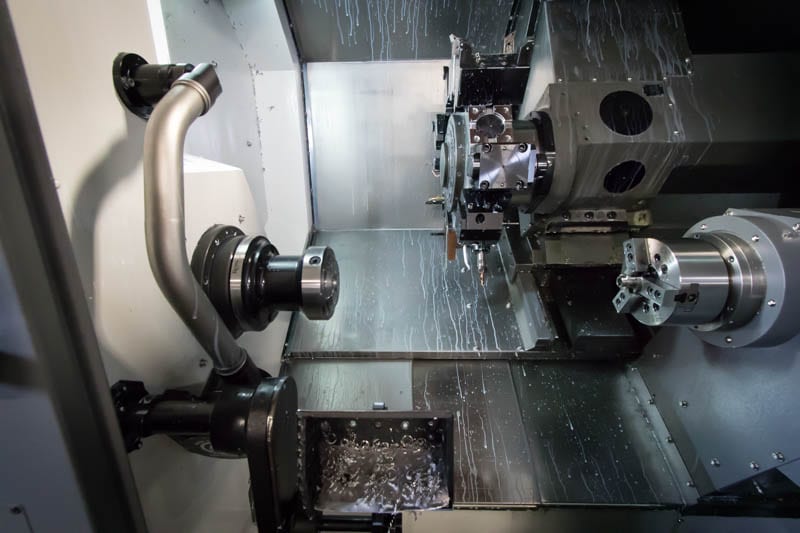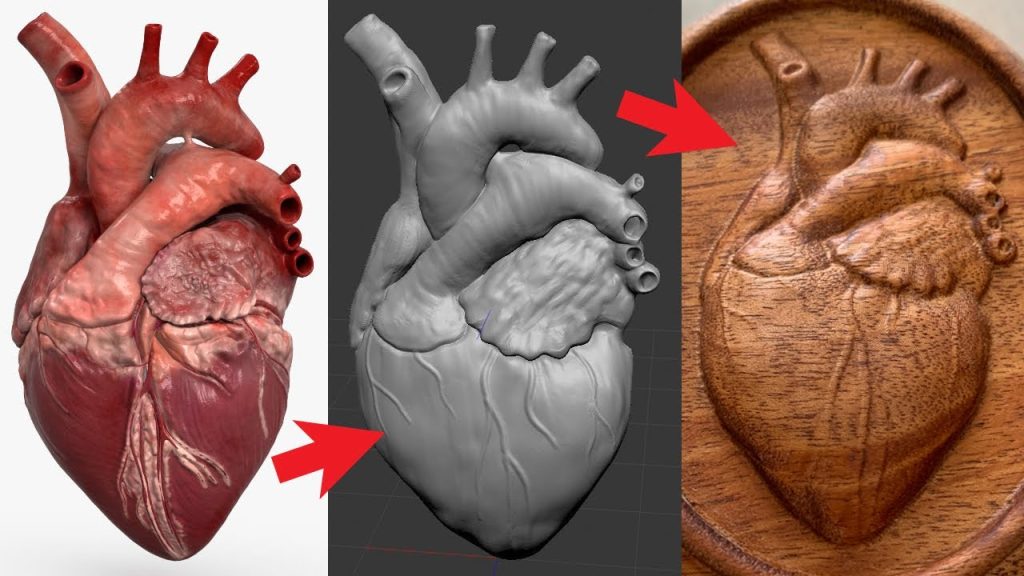Table of Contents
If you work with CNC turning brakes, then you know how crucial it is to keep them in good working condition. One of the most important maintenance tasks is bleeding the brakes, which ensures that air doesn’t get trapped in the system and compromise its performance. In this guide, we’ll take you through the steps to bleed your CNC turning brakes, so you can keep your machinery running smoothly and safely.
Firstly, it’s important to understand why bleeding your CNC turning brakes is essential. Air bubbles can build up in the brake lines over time, which can cause the brakes to feel spongy or unresponsive. Bleeding the brakes removes this trapped air and ensures that the brake fluid is circulating properly, which is critical for maintaining the safety and efficiency of your equipment. So, if you’re ready to learn how to bleed your CNC turning brakes, let’s get started!
To bleed CNC turning brakes, you will need a brake bleeder kit, a wrench, and a clean cloth. Here are the steps:
- First, fill the brake fluid reservoir to the recommended level.
- Next, locate the brake bleeder valve on the brake caliper.
- Attach the brake bleeder kit to the valve and place the other end in a container to collect the old brake fluid.
- Use the wrench to turn the valve counterclockwise to open it.
- Press down on the brake pedal slowly and hold it in place.
- Close the valve by turning it clockwise.
- Repeat the process until the fluid coming out is clear and free of bubbles.
- Wipe off any spilled brake fluid with a clean cloth.
- Finally, check the brake fluid level and test the brakes to make sure they are working properly.
How to Bleed CNC Turning Brakes?
Bleeding CNC turning brakes is an essential maintenance task that ensures the brakes are functioning at their optimal level. Properly functioning brakes ensure safety and prevent accidents. If you are not familiar with the process of bleeding brakes, it can seem daunting. However, with the right tools and knowledge, bleeding CNC turning brakes can be a straightforward process.
What is Brake Bleeding?
Brake bleeding is the process of removing air bubbles from the brake fluid in the brake lines. When air bubbles are present in the brake lines, they can compress, causing the brakes to feel spongy or unresponsive. Bleeding the brakes removes these air bubbles, ensuring the brake system is working correctly.
The process of bleeding brakes involves opening the brake system and allowing the old, contaminated brake fluid to be replaced with fresh fluid. This process ensures that the brake system is functioning correctly and that the brakes are responsive and reliable.
The Tools You Will Need
Before you begin the process of bleeding your CNC turning brakes, you will need to have the right tools on hand. The tools you will need include:
- A wrench to remove the brake bleeder valve
- A brake bleeder kit
Steps to Bleed CNC Turning Brakes
Bleeding CNC turning brakes can be a straightforward process if you follow the necessary steps. Here are the steps you need to take to bleed your brakes:
Step 1: Raise the Vehicle
Using a jack, raise your vehicle off the ground, and secure it on jack stands.
Step 2: Locate the Brake Bleeder Valve
Locate the brake bleeder valve on your CNC turning brake. The brake bleeder valve is usually found on the caliper or cylinder.
Step 3: Attach the Brake Bleeder Kit
Attach the brake bleeder kit to the brake bleeder valve. The kit should come with a hose that you will attach to the brake bleeder valve.
Step 4: Open the Bleeder Valve
Using the wrench, loosen the brake bleeder valve to allow the brake fluid to flow out of the system. Keep the valve open until you see clean fluid coming out of the valve.
Step 5: Refill the Brake Fluid Reservoir
Refill the brake fluid reservoir with new brake fluid. Make sure to keep an eye on the fluid level throughout the process to ensure it does not run low.
Step 6: Repeat the Process
Repeat the process of opening the brake bleeder valve, allowing the old fluid to flow out, and refilling the reservoir with new fluid until the fluid coming out of the valve is clean and free of bubbles.
Step 7: Tighten the Valve and Clean Up
Tighten the brake bleeder valve using the wrench and clean up any spilled brake fluid with a clean cloth.
Step 8: Test the Brakes
Test the brakes to ensure they are responsive and functioning correctly. Take your vehicle for a test drive and ensure that the brakes are working as they should.
The Benefits of Bleeding CNC Turning Brakes
Bleeding your CNC turning brakes is an essential maintenance task that provides many benefits. Some of the benefits of bleeding your brakes include:
- Improved brake responsiveness and reliability
- Increased safety on the road
- Prevention of brake failure and accidents
- Longer brake life
Bleeding Brakes vs. Flushing Brakes
Bleeding brakes and flushing brakes are two different maintenance tasks that are often confused. Bleeding brakes involves removing air bubbles from the brake lines, while flushing brakes involves replacing all of the old brake fluid with new fluid.
While bleeding brakes is an essential maintenance task that should be done regularly, flushing brakes is not necessary as often. Flushing brakes should be done every two to three years, while bleeding brakes should be done more frequently.
Conclusion
Keeping your CNC turning brakes in top condition is essential for your safety on the road. Bleeding your brakes is a straightforward maintenance task that ensures your brakes are functioning correctly and reliably. By following the steps outlined above and having the right tools on hand, you can easily bleed your brakes and enjoy the benefits of a well-maintained brake system.
Frequently Asked Questions:
In this section, you will find frequently asked questions about how to bleed CNC turning brakes. Following these steps will help you ensure that your CNC turning brakes are working correctly and efficiently.
What does it mean to bleed CNC turning brakes?
Bleeding the CNC turning brakes refers to the process of removing air from the brake lines. This is done by adding new brake fluid to the system and then pumping the brakes to remove any air bubbles. Bleeding the brakes is essential to ensure that the brakes work correctly and efficiently.
When air is in the brake lines, it can cause the brakes to feel spongy or not respond as expected. Additionally, air can cause the brakes to overheat, which can lead to damage to the brake system.
When should I bleed my CNC turning brakes?
You should bleed your CNC turning brakes when you notice that the brake pedal feels spongy or when the brakes are not responding as expected. Additionally, you should bleed your brakes if you have recently replaced any brake components. It is also recommended that you bleed your brakes at least once a year to ensure that they are working correctly.
If you are unsure whether you need to bleed your brakes, consult your owner’s manual or a professional mechanic.
What tools do I need to bleed my CNC turning brakes?
To bleed your CNC turning brakes, you will need a few tools, including a brake bleeding kit, a wrench or socket set, and a container to catch the old brake fluid. You may also need a helper to pump the brakes while you bleed them.
It is important to use the correct tools and follow the manufacturer’s instructions when bleeding your brakes to ensure that you do not damage the brake system.
Can I bleed my CNC turning brakes myself, or do I need a professional?
You can bleed your CNC turning brakes yourself, but it is essential to follow the manufacturer’s instructions carefully. If you are unsure about any aspect of the process, or if you do not have the necessary tools, it is recommended that you take your vehicle to a professional mechanic.
Attempting to bleed your brakes without the proper knowledge or tools can be dangerous and can cause damage to the brake system. If you are not confident in your ability to bleed your CNC turning brakes, seek professional help.
What should I do if my CNC turning brakes are still spongy after bleeding?
If your CNC turning brakes are still spongy after bleeding, there may be air still in the brake lines, or there could be a more significant issue with the brake system. It is recommended that you take your vehicle to a professional mechanic to diagnose and repair any issues with the brake system.
Continuing to drive with spongy brakes can be dangerous and can cause damage to the brake system, so it is essential to address any issues promptly.
In conclusion, learning how to bleed CNC turning brakes is an important skill that every technician and mechanic should possess. Not only does it help to ensure the safety of the vehicle and its passengers, but it also helps to improve the overall performance of the braking system.
By following the proper steps and using the appropriate tools, bleeding the brakes can be a relatively simple process that can be done quickly and efficiently.
Remember, if you are not confident in your ability to perform this task, it is always best to seek the assistance of a professional. With a little practice and patience, however, you can master the art of bleeding CNC turning brakes and ensure that your vehicle is operating at its best.
Request a quote today!
[contact-form-7 id="1578" title="Contact form"]
Please compress the file into a ZIP or RAR file before uploading. Alternatively, send through your RFQ by email.
enquires@unitymanufacture.com





